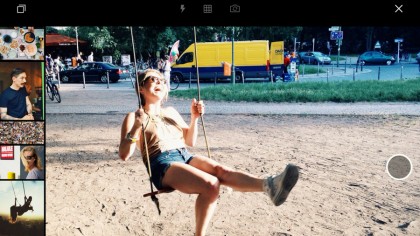Is the internet drowning in photos?
Smartphones and cameras snapped 880 billion photos in 2014
Artificial intelligence at work?
"It's a nice practical example of artificial intelligence," says Wolfram, whose computer language is based upon symbolic pattern matching. "What's more important is that we've reached the point where we can integrate this kind of AI operation right into the Wolfram Language to use as a new, powerful building block for knowledge-based programming."

Crucially, this kind of programming can also help with sorting through petabytes of photos that would otherwise be forgotten. "If one had lots of photographs, one could immediately write a Wolfram Language program that, for example, gave statistics on the different kinds of animals, or planes, or devices, or whatever, that appear in the photographs," says Wolfram.
Time-lapse mining
From Instagram to Flickr to Dropbox and many more, photo vaults are everywhere. Most have metadata within, which got a group of researchers from the University of Washington thinking about automated 'time-lapse mining'. They put 86 million timestamped and geotagged photos taken around the world into a computer system that automatically discovered all locations in the world represented within that collection, warped each photo to a common viewpoint, and generated a short time-lapse video for each one.

Considering the rough data is from average quality tourist snaps, the results are incredible. You can watch the Goldman Sachs Tower skyscraper slowly taking shape over several months in Manhattan, Norway's Briksdalsbreen glacier gradually retreating over several years, and waterfalls slowly changing course. You can watch history unfold… and all from a bunch of photos that would have been mostly ignored and forgotten, left in the cloud to digitally decay.
Contextualised search
As with photos, image recognition tech only really means something if it's mobile. A visual search industry is now on the rise, which depends not only on the volume of photos online, but also people's love of visual sites like Pinterest.

"The vast amount of user generated images being uploaded to the web is a major opportunity," says Mark Elfenbein, CEO of Canadian visual search company Slyce. "Rather than just being marketed to via branded advertising, consumers are now becoming inspired by products they see in images from all over the web, from those their friends are posting on Facebook and Instagram to the huge socially shared collections on sites such as Pinterest."
Enabling products within these images to be automatically discoverable – and available to buy via a tap or two – is a major new opportunity for retailers thanks to image recognition.
Are you a pro? Subscribe to our newsletter
Sign up to the TechRadar Pro newsletter to get all the top news, opinion, features and guidance your business needs to succeed!
Slyce can take a 3D or 2D image snapped by a smartphone and use its attributes to provide either a direct or a close matching product from a retailer's product line, which can then be purchased. Expect to see it, and similar tech, within branded apps from retailers shortly.
Photo recognition software might not seem all that exciting, but it's a powerful force for democracy online. "What we love about this is that everybody has the chance to be a professional photographer," says Shaji. "You don't have to be well known, have the most likes or followers; this is purely based on talent alone."
Jamie is a freelance tech, travel and space journalist based in the UK. He’s been writing regularly for Techradar since it was launched in 2008 and also writes regularly for Forbes, The Telegraph, the South China Morning Post, Sky & Telescope and the Sky At Night magazine as well as other Future titles T3, Digital Camera World, All About Space and Space.com. He also edits two of his own websites, TravGear.com and WhenIsTheNextEclipse.com that reflect his obsession with travel gear and solar eclipse travel. He is the author of A Stargazing Program For Beginners (Springer, 2015),
